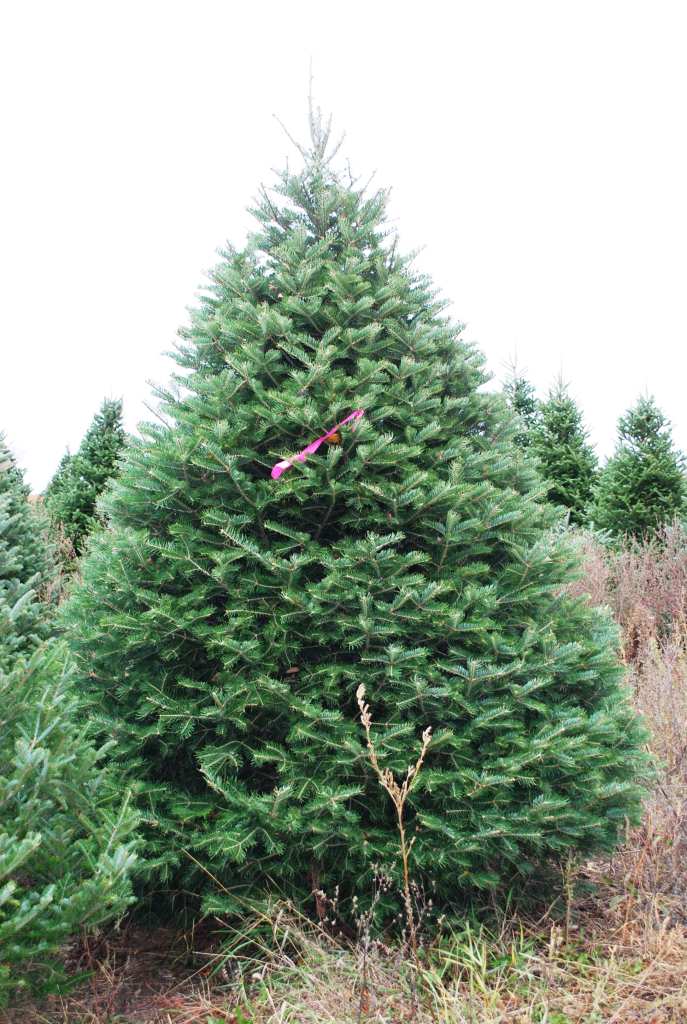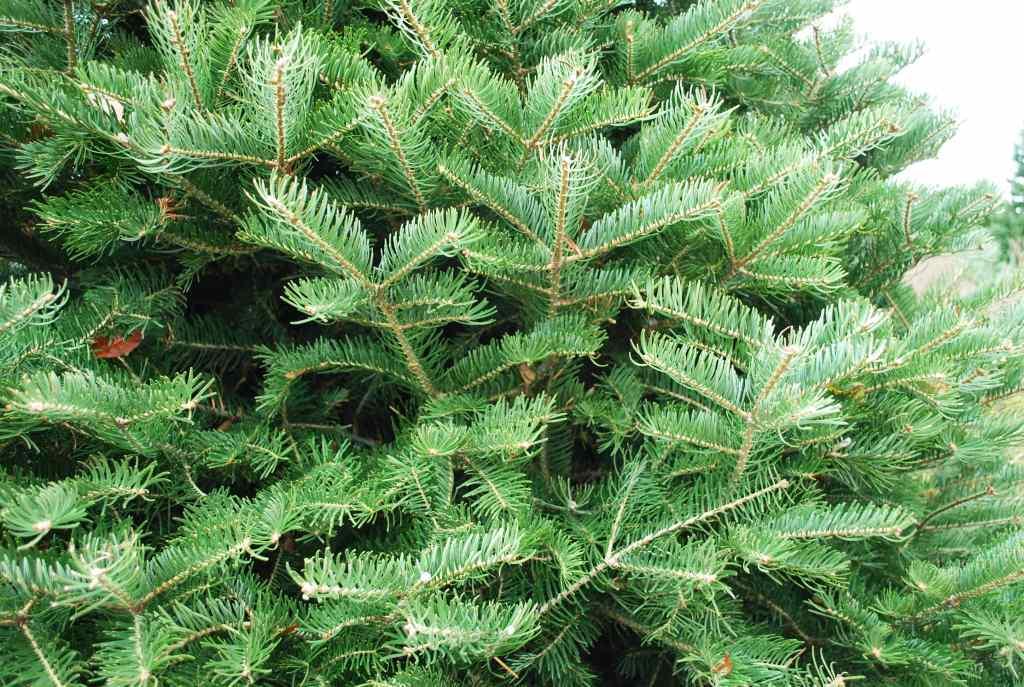As a graduate student at the University of Georgia many years ago I took a course in research methods. One of the discussions that stuck in my mind all these years centered on the word ‘Serendipity’. The classic definition of the word is “the faculty or phenomenon of finding valuable or agreeable things not sought for.” As scientists we rely heavily on the scientific method as a systematic method of inquiry to make new discoveries. But we also need to need to keep our eyes and minds open to serendipitous discoveries along the way as well.
So what got me thinking about serendipity? A few weeks back I visited a Christmas tree grower in northern Michigan with Jill O’Donnell our state-wide Christmas tree educator. The grower called us in because he had some questions about some unusual trees in one of his Fraser fir plantations. And, not only were the trees unusual, they were gorgeous. The only question was; what were they? The plantation originated from seed the grower had collected himself from some older Fraser fir trees he kept as a seed orchard. He sent the seed to a large forest nursery in the Northwest, which grew the seedlings and sent them back to him. The grower wondered if seed of another species could have been introduced in the process. Possible, I told him, but not very likely. Nurseries that are serious about contract growing are meticulous in keeping seed lots separate – few things are worse in that business than sending the wrong seedlings. Plus, I’ve worked with many species of fir and this was one I didn’t recognize. The trees had many characteristics of Fraser fir but also had attributes of concolor fir; long bluish needles and a slight hint of citrus scent when the needles were crushed. Many fir species can hybridize and all I could think was these trees had to be hybrids. “Are there any mature concolor firs near the seed orchard?” I asked. The grower brightened, “Actually there’s a group of older concolors about a half mile up the hill from the Fraser fir orchard.” We jumped in his pick-up and visited the concolor firs. Many of the trees had cone stalks indicating they were reproductively mature and could produce pollen. Conifer pollen can travel for miles so it’s reasonable to expect that some of the concolor pollen could reach the Fraser firs, which were downhill and downwind based on the prevailing winds in the area.

Excellent tree form of the mysterious hybrids
So what’s next? There are several reasons to follow up on this serendipitous discovery and try to make some additional crosses. First, as evidenced by the photos, the trees look fantastic. Second, Fraser fir and concolor fir are each great trees but they also have some liabilities. A downside of concolor is that they break bud early and often suffer late frost damage – Fraser’s break bud late. Fraser fir need acidic, well drained soils – concolor fir can grower on a broader range of sites. It’s possible that the hybrids will have intermediate characteristics that would make them ‘the best of both worlds’.

Foliage close up
The only thing left is to decide what to call the hybrids. Nurseries like to combine common names. So, Craser fir? Froncolor?
Since concolor is also commonly called white fir, I vote for ‘White Christmas.’
This is really cool, Bert! Thanks for posting it.
Shouldn’t the growers name figure in somehow. To bad his name wasn’t Bing Crosby referencing Linda’s great potential tree name.